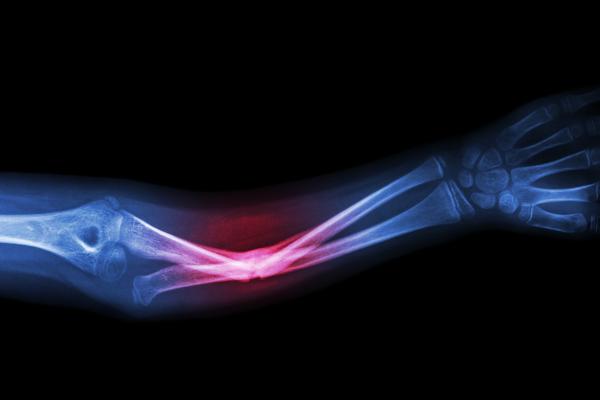The story of Easton Elrod, a 4-year old boy “born broken, everywhere” having sustained over 100 bone breaks in his lifetime was recently trending in the news. Birth, alone, broke “both legs, one arm, the back of his head, all of his ribs,” according to his mother Brianna Elrod.
None of us remember—or, maybe I should speak for myself— but birth can be quite traumatic even in the most routine of circumstances. The infant sustained for months in a fluid-filled environment contained within the greatest suspension system known— aka the pregnant womb— must squeeze through the birth canal to make his way into the world for his first breath of air.
Sounds daunting enough, but that’s the incredible part of nature as the infant is well-designed to weather the journey. The newborn skull, for example, is not made of mineralized bone, has multiple suture lines and open areas so the large pliable pieces can morph for successful delivery. Afterward, the system serves a dual purpose of being malleable so that the brain has room to grow. So, not until much later do these parts fuse to form the adult skull.
For the average baby not ultimately diagnosed with a moderate to severe form of Osteogenesis Imperfecta (OI)— a genetic disorder causing defects in quantity or quality of collagen— like Easton Elrod, fracturing a clavicle is not uncommon in a challenging vaginal birth. Due to positioning or a stuck shoulder or sometimes a large baby, this can occur. It is not an every day event, but happens enough that it is considered a consequence of normal birth trauma. When it does, the intervention is typically minimal as long as the bones are not displaced and impeding surrounding structures (a rare situation). Usually, the clinical course requires being aware of the area while clothing or moving the infant and being more gentle on that side as it heals -- all the while monitoring for continued symmetrical use and strength of the upper extremities.
Due to the wide spectrum of OI from mild to severe forms, in extreme cases the act of being born can be life-threatening. This brittle bone disease literally makes a newborn very fragile. In the extreme, it is not merely the pain of the many broken bones that is concerning but also what vital tissues they damage and organs they prevent from normally functioning. Crushing injuries can complicate the picture. Consider how challenging aerating the lungs can be if all the ribs are broken, for example.
Think about how a basic diaper change or a vigorous hug in a person with a more severe form of OI can elicit a fracture. Let alone recreational activities as a child ages.
When this was discovered upon Easton’s birth at the hospital, the medical team consulted pediatric orthopedic surgeon, Dr. Jill Flanagan. Due to the rapid growth in early life, guiding the development of these weaker structures is essential to achieving therapeutic goals. When he was 15 months old, Dr. Flanagan began inserting expandable metal rods to strengthen the leg bones. She says, “Those rods are like internal casts, that keep his bones straight and aligned. The more straight his bones are, the less likely they are to break.”
It is reported that he is growing and receives therapies every 10 weeks for pain management and bone strengthening via a chest port. Described by his mother as having “awe-inspiring” willpower and determination, you can see more of his story here (and video). Fortunately, he is swimming, playing baseball and living a seemingly full, active life.
The mainstay of treatment for OI includes medical, surgical and physical therapies designed to enhance function, prevent accidental trauma and provide supportive care. There is great variability in scope of disease. Having weaker bones is universal. Commonly, impaired growth is an issue as are bony deformities like bowing of the legs or curvature of the spine. Breathing can be affected, as can the heart, hearing and brittle nature of teeth.
The more mild form can lack overt symptoms. The most severe can be lethal in the newborn period due to the multitude of fractures and compromised lungs and cardiovascular complications. In rare situations, fractures can even precede birth. To review the many forms and their respective characteristics, see here.
According to the Osteogenesis Imperfecta Foundation, 50,000 people are impacted in the United States. They report the majority can expect an average life span, thrive and lead very productive, healthy lives.
Like anyone else, these patients can endure illnesses from diabetes to depression to cancer, get vaccines and maintain routine preventive care practices. Since OI classification spans from mild to moderate, severe or lethal, clinical features and interventions are geared to the individual. Assessing issues prone to OI in general, like connective tissue problems of tendons or mitral valve laxity, easy bruising or respiratory difficulty challenged by chest wall deformities should be standard fare as well. Properly using a blood pressure cuff to avoid harm and performing certain routine procedures can require adjustment-- so, a medical professional well versed in the diverse manifestations of OI is essential.
Hopefully, the current research underway will shift the paradigm toward cure. Given the palliative nature of today's OI care, it will be interesting to see if gene therapy or improved pharmacology play integral roles in the future.




